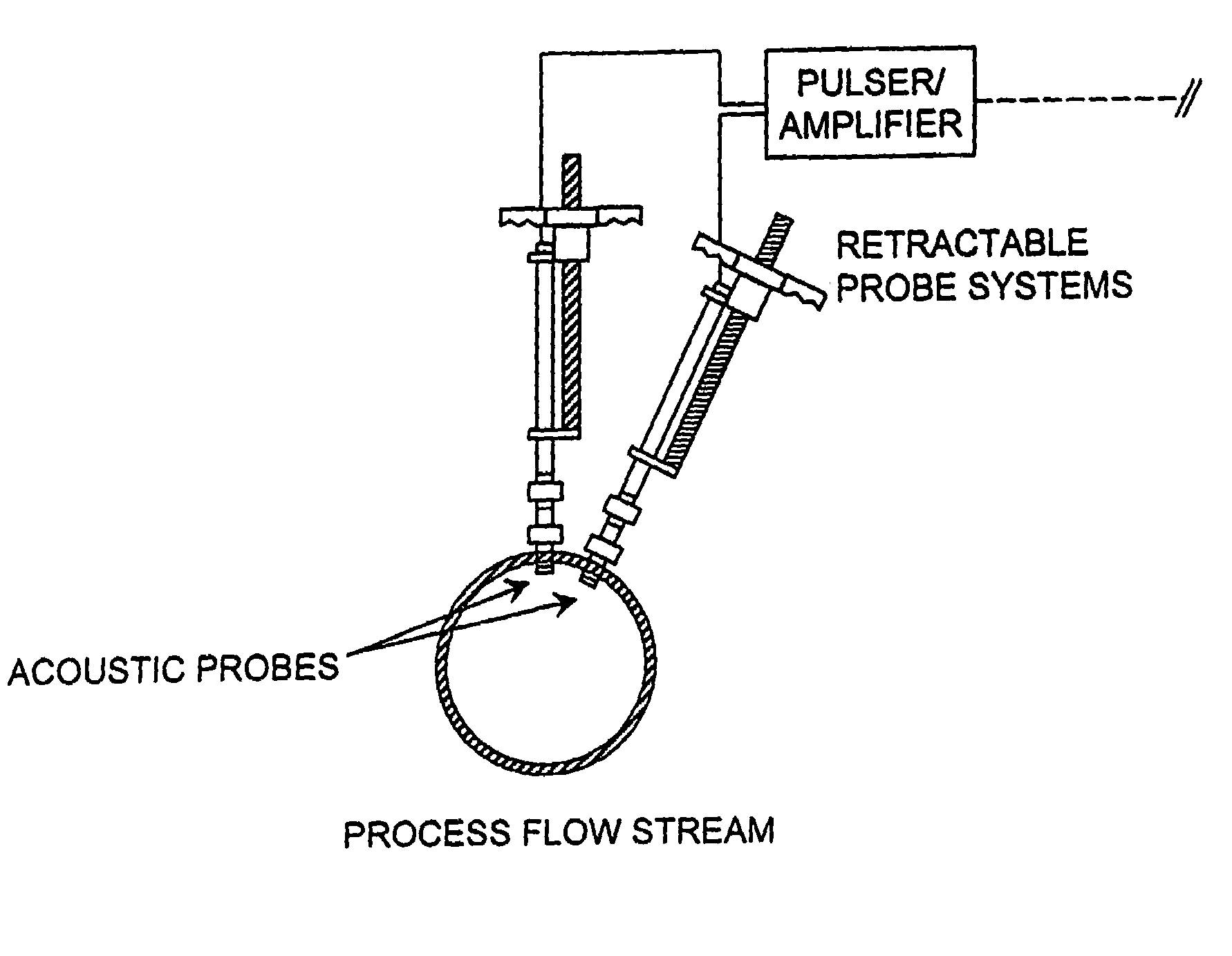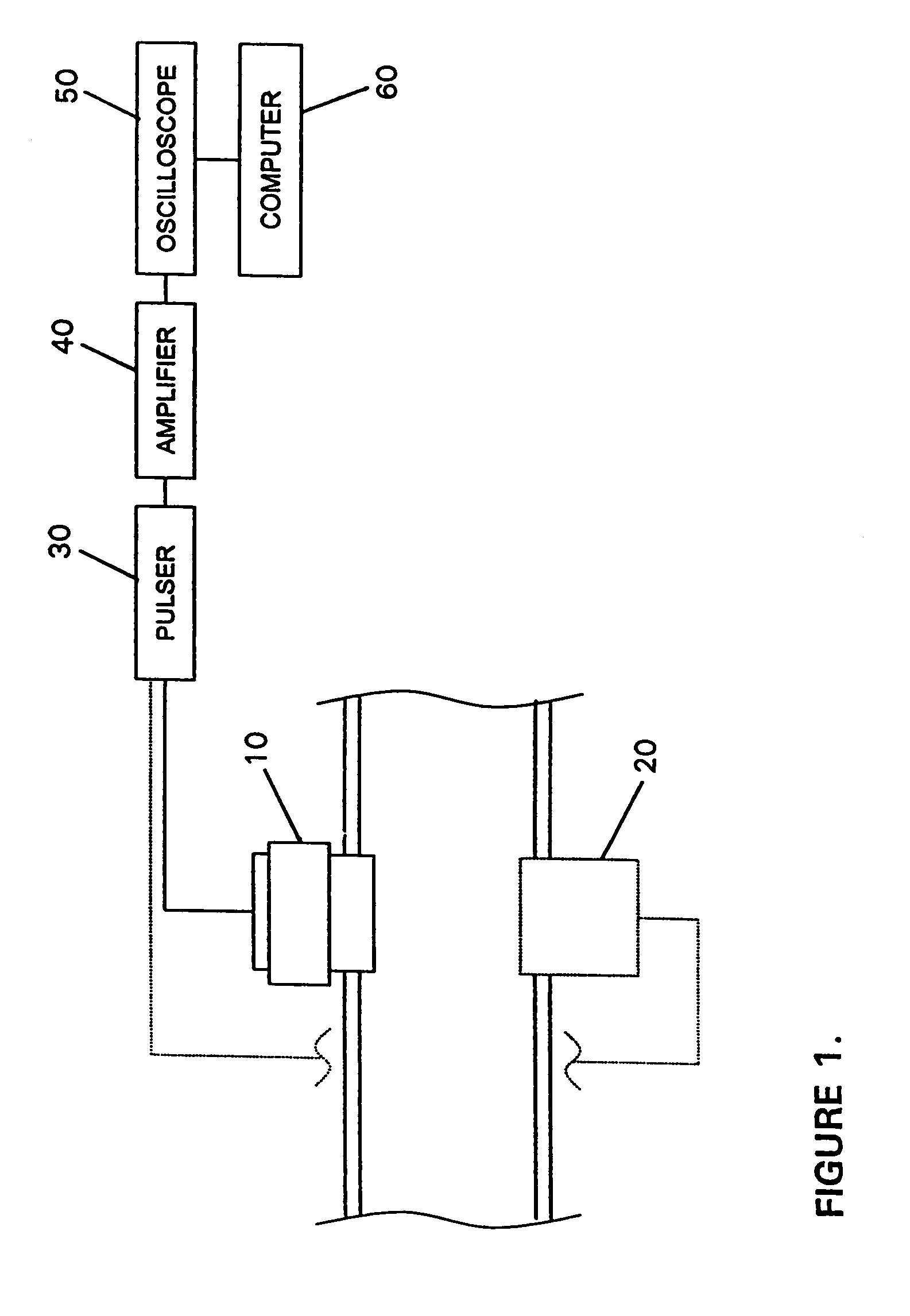Measurement and control of asphaltene agglomeration in hydrocarbon liquids
a technology of hydrocarbon liquid and asphaltene, which is applied in the direction of monitoring particle agglomeration, instruments, ultrasonic/sonic/infrasonic wave generation, etc. it can solve the problems of lack of a method, increase the tendency of asphaltenes to agglomerate into larger particles, and economic cost of asphaltene precipitation in crude oil or in oil process streams, so as to achieve no additional expense or effort
- Summary
- Abstract
- Description
- Claims
- Application Information
AI Technical Summary
Benefits of technology
Problems solved by technology
Method used
Image
Examples
example 1
[0092]Measurement of the state of agglomeration of asphaltenes in crude oil by a pulse-echo technique.
[0093]A system including a UTEX UTP320 pulser / amplifier was used to provide a pulsed electrical signal to a 10 MHz focused ultrasonic probe. The tip of the probe was submerged in a sample of undiluted crude oil. The pulse signal used in this example had the following characteristics:
[0094]Voltage=1 kV (1,000 volts)
[0095]Duration=3 nanoseconds
[0096]Impedance=70 Ohms
[0097]Electrical power=14,285.7 watts
[0098]Efficiency=0.1
[0099]Acoustic power=1,428.57 watts
[0100]Spike frequency=1,000 Hz
[0101]On / OffRatio=3'10−6
[0102]Mean Electrical Power=0.04286 watts
[0103]Mean Acoustic Power=0.00429 watts
[0104]The probe also acted as the sensor to detect back-scattered energy. The UTEX pulser / amplifier amplified the detected signal and transmitted it to a LeCroy Model 9320 oscilloscope. The oscilloscope carried out an analog-to-digital conversion of the signal and gated the signal to back-scatter by ...
PUM
 Login to View More
Login to View More Abstract
Description
Claims
Application Information
 Login to View More
Login to View More - R&D
- Intellectual Property
- Life Sciences
- Materials
- Tech Scout
- Unparalleled Data Quality
- Higher Quality Content
- 60% Fewer Hallucinations
Browse by: Latest US Patents, China's latest patents, Technical Efficacy Thesaurus, Application Domain, Technology Topic, Popular Technical Reports.
© 2025 PatSnap. All rights reserved.Legal|Privacy policy|Modern Slavery Act Transparency Statement|Sitemap|About US| Contact US: help@patsnap.com



